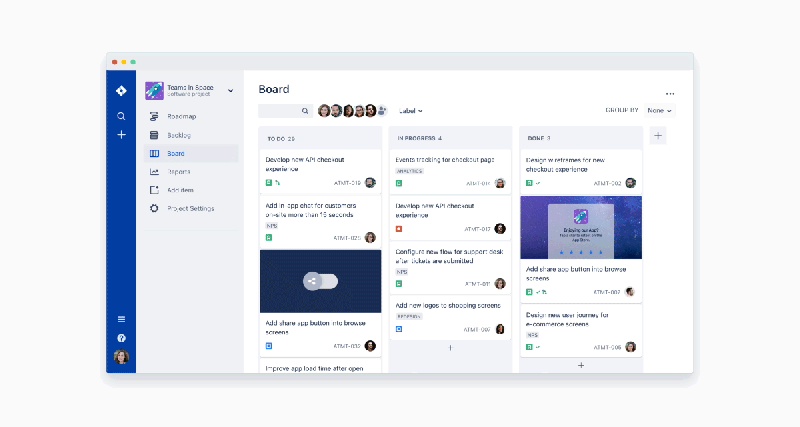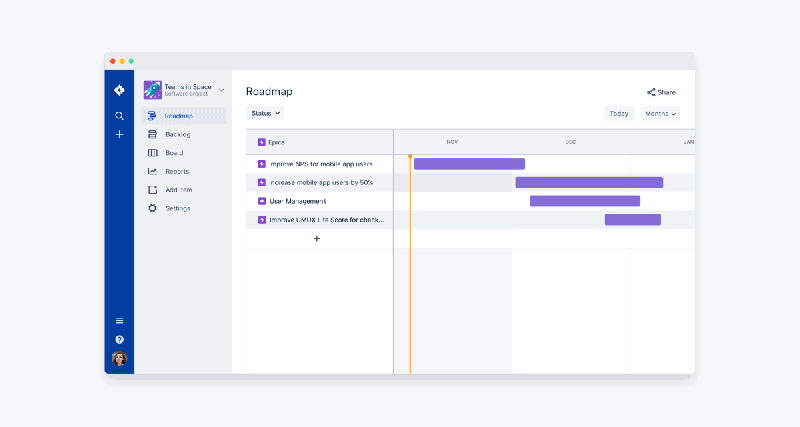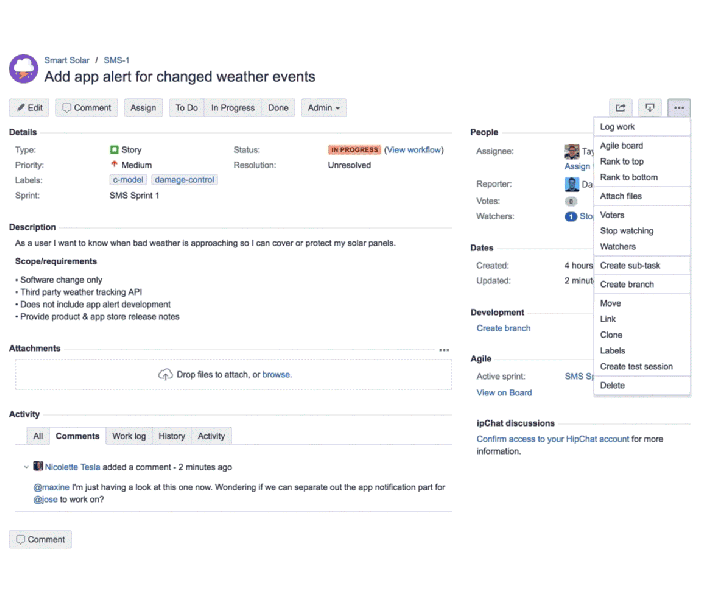Atlassian’s Jira, an issue-tracking service written in Java and launched in 2002, was initially conceived as a software development aid, but it has evolved over the years into an all-purpose project management tool. More than 50,000 customers in over 200 countries use it to keep on top of tasks — clients including Twitter, Skype, NASA, and the U.S. Department of defense — and that growth necessitated a migration to Amazon Web Services (AWS) this spring. (Previously, Atlassian hosted Jira on tens of thousands of virtual machines running on its datacenters.)
According to Atlassian, the move to AWS presented the perfect opportunity to embrace the benefits conferred by distributed infrastructure — of Amazon’s nearly 100 cloud services, Atlassian taps all but three. Today, after a summer’s worth of hard work, the Sydney, Australia company unveiled the fruit of its labor: the improved Jira Software Cloud, which features a streamlined user interface, a new timeline view, a simplified configuration flow, and APIs that integrate with Bitbucket, GitHub, Slack, and other third-party apps and services.
“Not too long ago, we started working on reimagining the cloud [experience] as we moved onto Amazon — radically rethink[ing] the guts of Jira,” Sean Regan, head of growth for software teams at Jira, told VentureBeat in a phone interview. “More and more people are part of the software team now. It needed to be more accessible to those people, and it needed to be more powerful … That’s why we rearchitected Jira to make it simpler.”

Above: The new Jira Software Cloud board.
To that end, the new Jira has picked up a few tricks from Trello, the project management service Atlassian acquired for $425 million in January 2017. Specifically, users can now move cards, create columns, and edit titles and descriptions on a Jira board in a Trello-like drag-and-drop fashion, without having to worry about those changes failing to propagate to a backend workflow engine.
June 5th: The AI Audit in NYC
Join us next week in NYC to engage with top executive leaders, delving into strategies for auditing AI models to ensure fairness, optimal performance, and ethical compliance across diverse organizations. Secure your attendance for this exclusive invite-only event.
Brand new in Jira Software is Roadmap, a zoomed-out view of ongoing tasks organized chronologically. It’s a month-to-month calendar containing tasks that correspond to a bar graph, which represents chunks of time on a timeline. According to Regan, Roadmap was designed to make it easier to see where ongoing tasks fall in relation to one another. And usability was top of mind — due dates can be adjusted from within the timeline view, saving project managers the trouble of hunting down tasks individually.

Above: Jira Software’s Roadmap feature.
Jira Software also boasts simplified onboarding and configuration flows that let teams personalize boards by adding custom issue types and permissions. Users create new Jira boards by answering a series of natural language questions — for example, whether the development schedule’s “tight” or “flexible” — and specifying the project’s visibility (e.g., public or private). Next, they invite members and optionally set column limits (which highlight columns that exceed a content threshold), turn on sprints (which require work to be completed in fixed units of time), and tweak other settings to their liking.
Jira issues — visual representations of bugs, stories, helpdesk tickets, features, and other ongoing work — now provide rich attachments for any file type, labeling features, and dedicated columns for “blockers and dependencies.” (For example, attached decks and presentations are accompanied by a preview image and stats like the upload date, originating device (i.e., phone or PC), and the total number of slides they contain.) Finally, the improved Jira has new APIs that bring in data from a variety of online tools, including Bitbucket Pipelines, Jenkins, InVision, Adobe, Sketch, Slack, Gmail, and Workplace by Facebook. They join the more than 600 integrations Jira Software Cloud already supports.

Above: Issues in Jira Software.
“It’s much easier for teams to do things inline,” Jake Brereton, head of marketing for Jira Software Cloud, told VentureBeat. “It breaks down the complexity of software development.”
With this update, Atlassian is also increasing the user limit to 5,000 seats, and Jira now features compliance with three different ISO certifications and SOC 2 Type II.
The debut of the updated Jira Software follows hot on the heels of the launch of Jira Ops, which Atlassian announced at its Summit Europe conference in Barcelona in September. The new platform, which is available in early access ahead of a public launch in 2019, comprises service, performance, and cloud tools optimized for IT reporting and delivery, and works with existing Atlassian offerings like Confluence, Jira Service Desk, Jira Software, and Statuspage.
And it comes after Atlassian’s $295 million acquisition of OpsGenie and its sale of HipChat and Stride — two workflow productivity apps designed for large enterprises — to Slack. As part of a strategic partnership, Slack agreed to pay an undisclosed amount over the next three years for the intellectual property underlying HipChat Cloud and Stride; in return Atlassian will make a small equity investment in Slack.
Atlassian, which was founded in 2002 and launched an initial public offering in 2015, reported over 125,000 customers by the end of 2017. During its fourth-quarter earnings call in July, the company announced revenue of $243.8 million, up 40 percent year over year.

